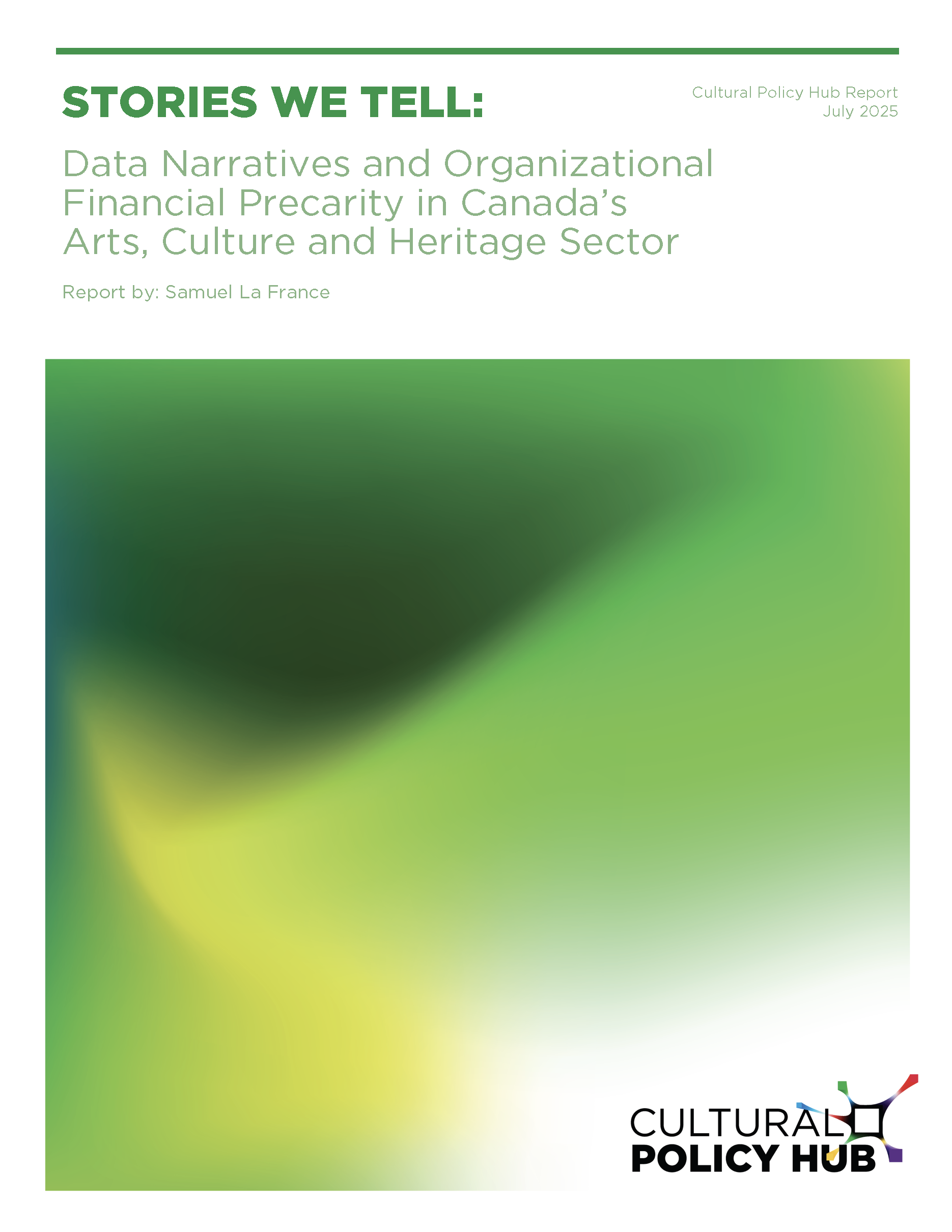Stories We Tell: Data Narratives and Organizational Financial Precarity in Canada’s Arts, Culture and Heritage Sector

In the fall of 2024, the Cultural Policy Hub at OCAD University launched a two-year national policy research project to investigate an urgent and long-standing challenge: precarity in Canada’s not-for-profit arts, culture and heritage sector.
The Hub’s newest publication, Stories We Tell, offers a data-driven look into this issue. Drawing on the financial records of more than 1,800 publicly funded arts and culture organizations from 2013 to 2023, the report tracks the sector’s financial health across a decade—before, during, and after the COVID-19 pandemic.
The findings are stark. The disappearance of emergency supports, coupled with sluggish recovery in private and earned revenue, has left many organizations exposed. And while some topline indicators suggest a rebound, inflation and structural fragility have undercut real stability, especially for small and mid-sized organizations that operate with little cushion.
Key findings include:
- A rebound that masks underlying strain: Organizational revenues and expenses initially fell during the pandemic but later surpassed pre-pandemic levels by 2021–22 and continued to grow in 2022–23. However, inflation has caused expenses to rise and has eroded purchasing power, meaning this nominal growth does not equate to recovery in real terms.
- The role of public funding: Government emergency funding during the pandemic buoyed the sector, temporarily creating record-high average surpluses of 10.5%. But when those supports ended, in 2022–23, organizations recorded average deficits of -2.2%.
- Stalled revenue generation: Organizations’ ability to generate private and earned income declined during the pandemic and has yet to recover. This is especially worrying for small and mid-sized organizations, which have historically delivered a higher return on investment than their larger counterparts.
- Structural vulnerability persists: Without significant growth in multiple funding areas—public, private and earned—many organizations will remain financially unstable.
This report builds on the Hub’s earlier 2025 study on the root causes of precarity. Taken together, the two publications illuminate a deeper truth: precarity in the arts is not a pandemic-era aberration. It is a structural condition, baked into the operating environment of the sector. The pandemic merely exposed and accelerated long-standing vulnerabilities.
Contrary to the common narrative that suggests a return to a stable pre-COVID “normal,” Stories We Tell argues that such a normal never truly existed. For many organizations, particularly those led by or serving equity-deserving communities, instability has long been the norm. Rising costs, limited evaluative capacity, growing expectations and inadequate funding mechanisms have pushed the sector toward a breaking point. And that pressure is borne most heavily by the artists and cultural workers who bring the sector to life.
The question we now face is not how to recover—it is how to transform.
This project is funded in part by the Government of Canada.

